
Windows command probes in Harness Chaos let you monitor system health in real-time during chaos experiments. Set up your infrastructure first, create targeted probes, then attach them to experiments for continuous validation. This approach builds confidence that your Windows systems can handle unexpected failures.
We've all been there - wondering if our Windows systems will actually hold up when things go sideways. The truth is, you can't really know until you test it, and that's exactly what chaos engineering helps you do.
Windows command probes in Harness Chaos give you a way to continuously monitor your system's health while you're deliberately breaking things. Instead of crossing your fingers and hoping for the best, you get real-time feedback on how your infrastructure responds to failure scenarios.
In this guide, we'll walk through the complete process: setting up your Windows chaos infrastructure, creating command probes that monitor what matters most, and running experiments that actually tell you something useful about your system's resilience.
Setting the Foundation: Installing Windows Chaos Infrastructure
Before we dive into command probes, let's get your Windows chaos infrastructure up and running. Think of this as laying the groundwork for all your future chaos experiments.
Step 1: Environment Setup
Go to Environments and create a new environment for your chaos engineering setup. This gives you a clean slate to work with and helps you organize your chaos experiments properly.
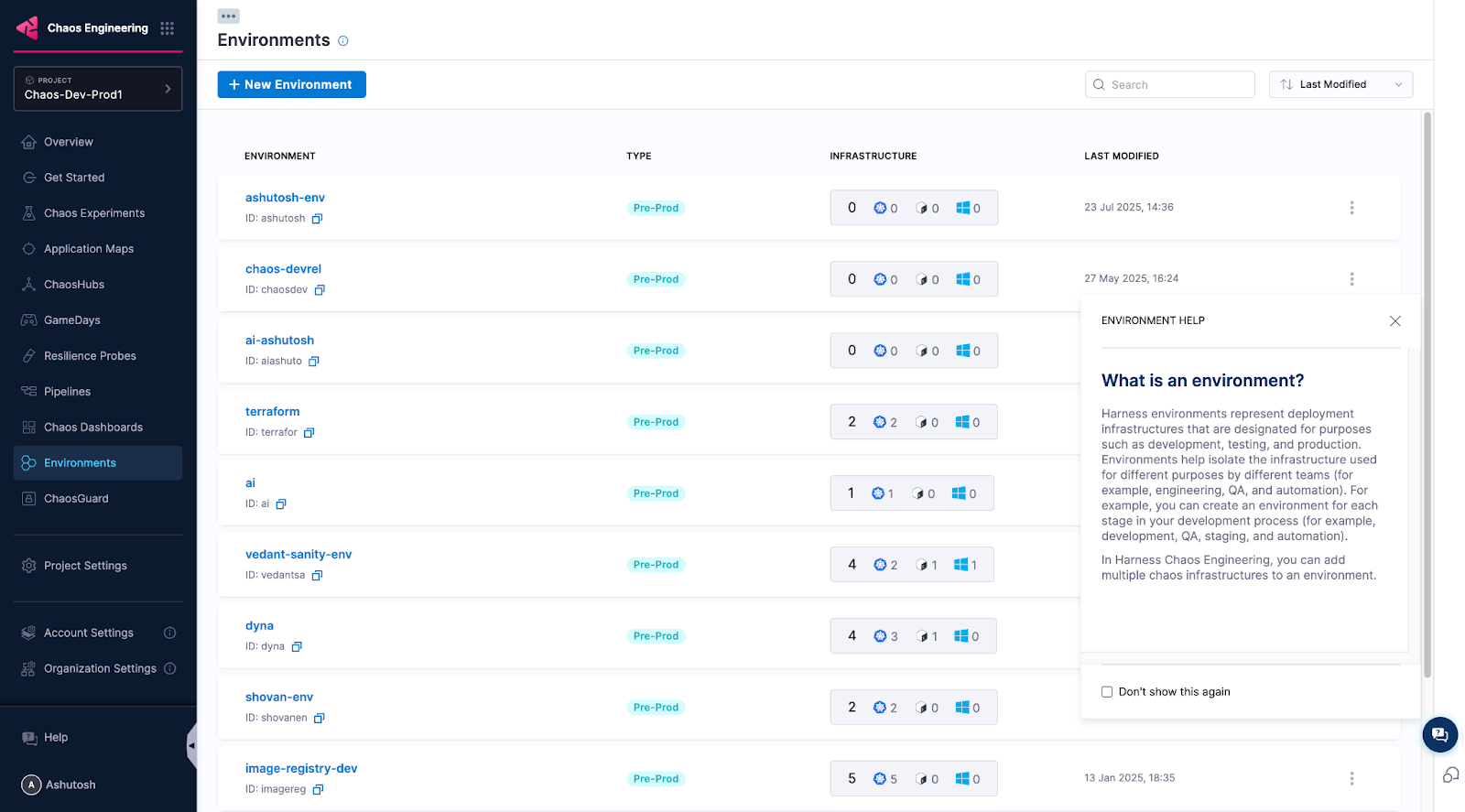
Step 2: Infrastructure Creation
Navigate to the infrastructure creation section and select Windows as your infrastructure type. Click New Infrastructure to begin the setup process.
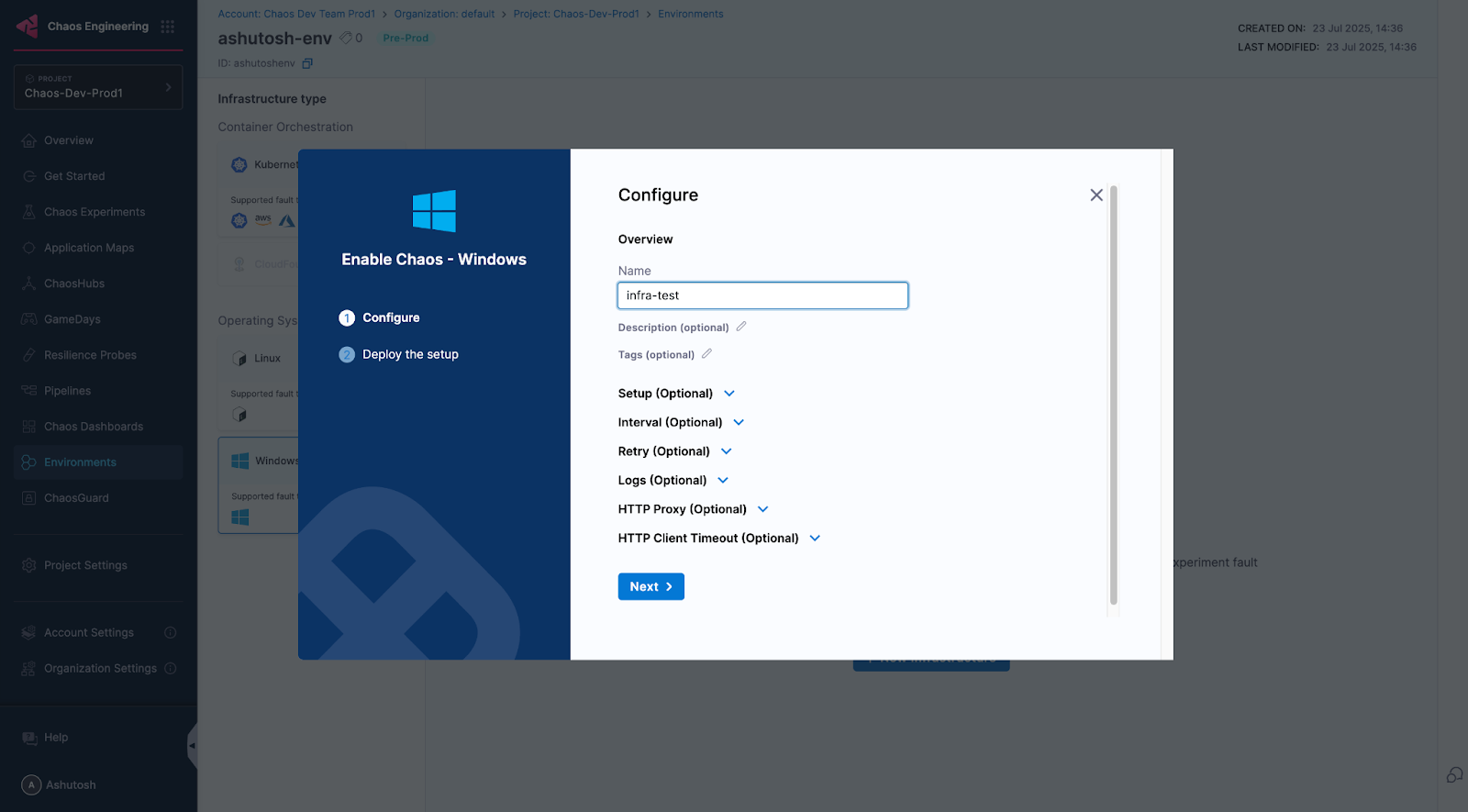
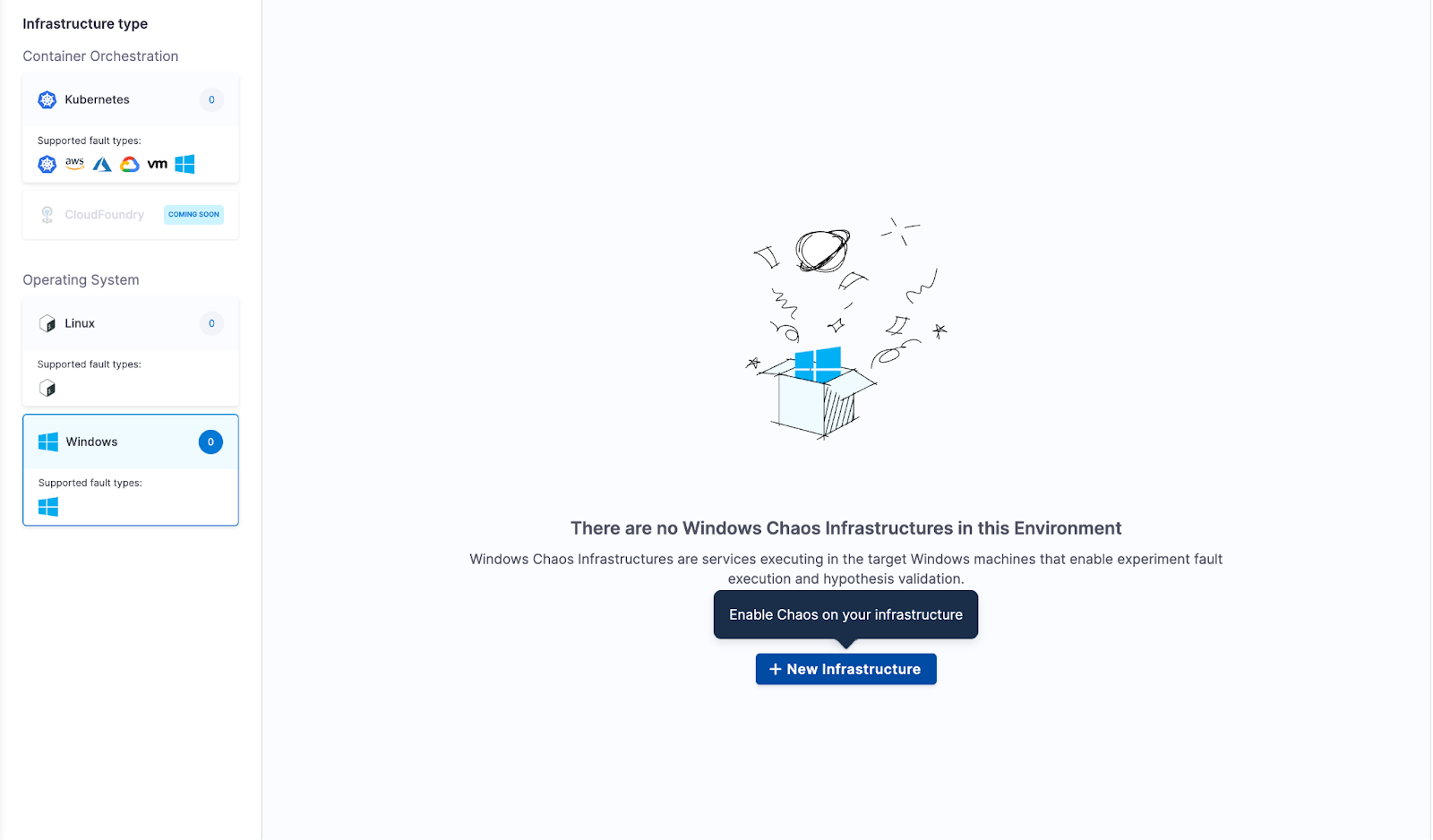
You'll need to provide a name for your infrastructure along with any optional values that match your specific requirements. This naming convention will help you identify and manage multiple infrastructures later, so choose something descriptive and meaningful.
Step 3: The Deployment Process
We’ll be deploying the infrastructure. The system will generate a command for you to copy. If you've configured a password, make sure to replace the <your-password> placeholder with your actual password.
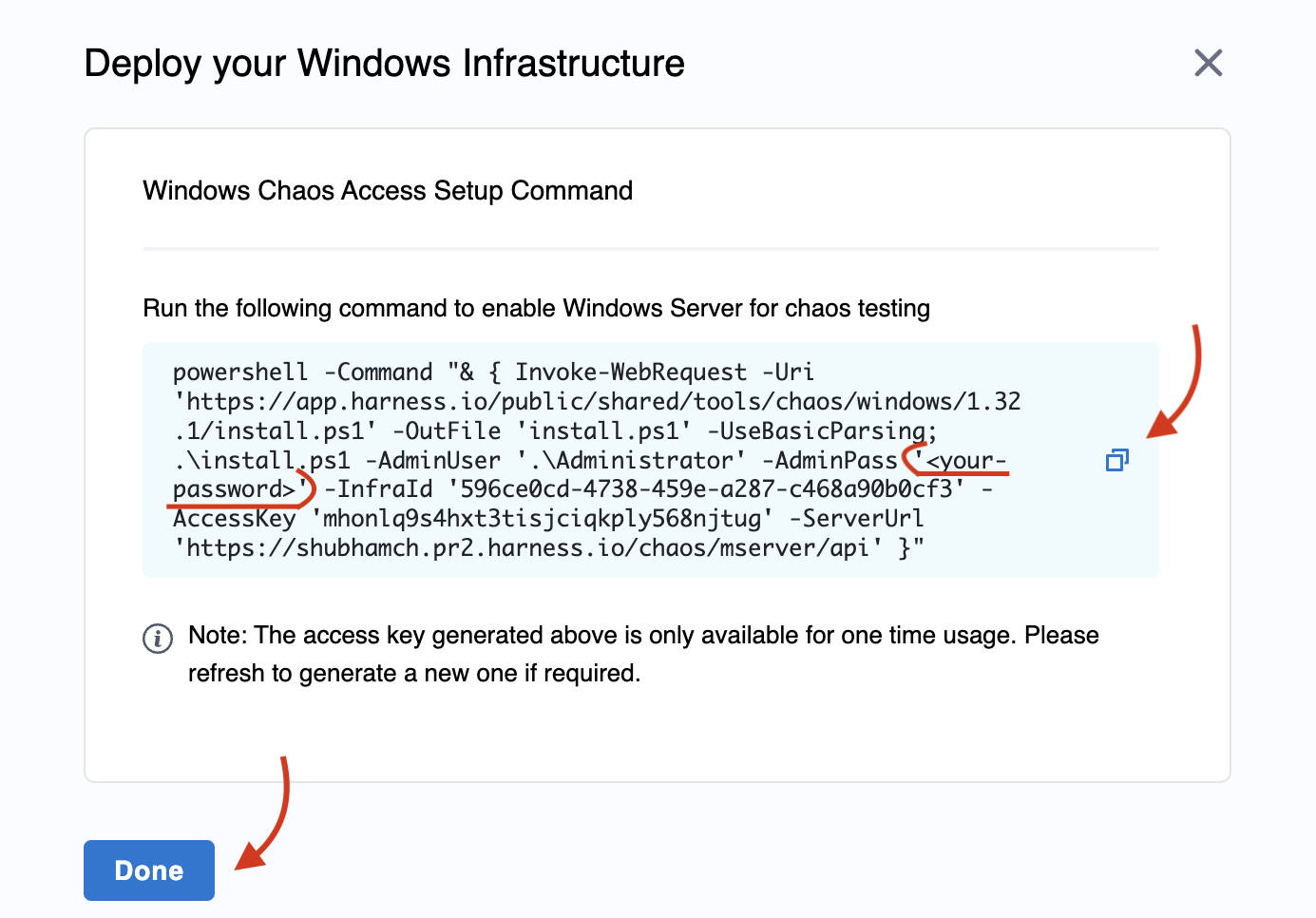
Here's a crucial tip: execute this command in a terminal with administrative privileges. If you're not running as an admin by default, right-click your command prompt and select "Run as administrator."
Once you execute the command, you'll see a detailed installation process on your terminal. The output shows the system creating directories, downloading necessary components like Testlimit, accepting EULAs, and setting up the infrastructure binary. You'll also see the creation of log files and Windows services - all indicators that your infrastructure is being properly configured.
What You'll See During Installation
The installation process provides detailed feedback:
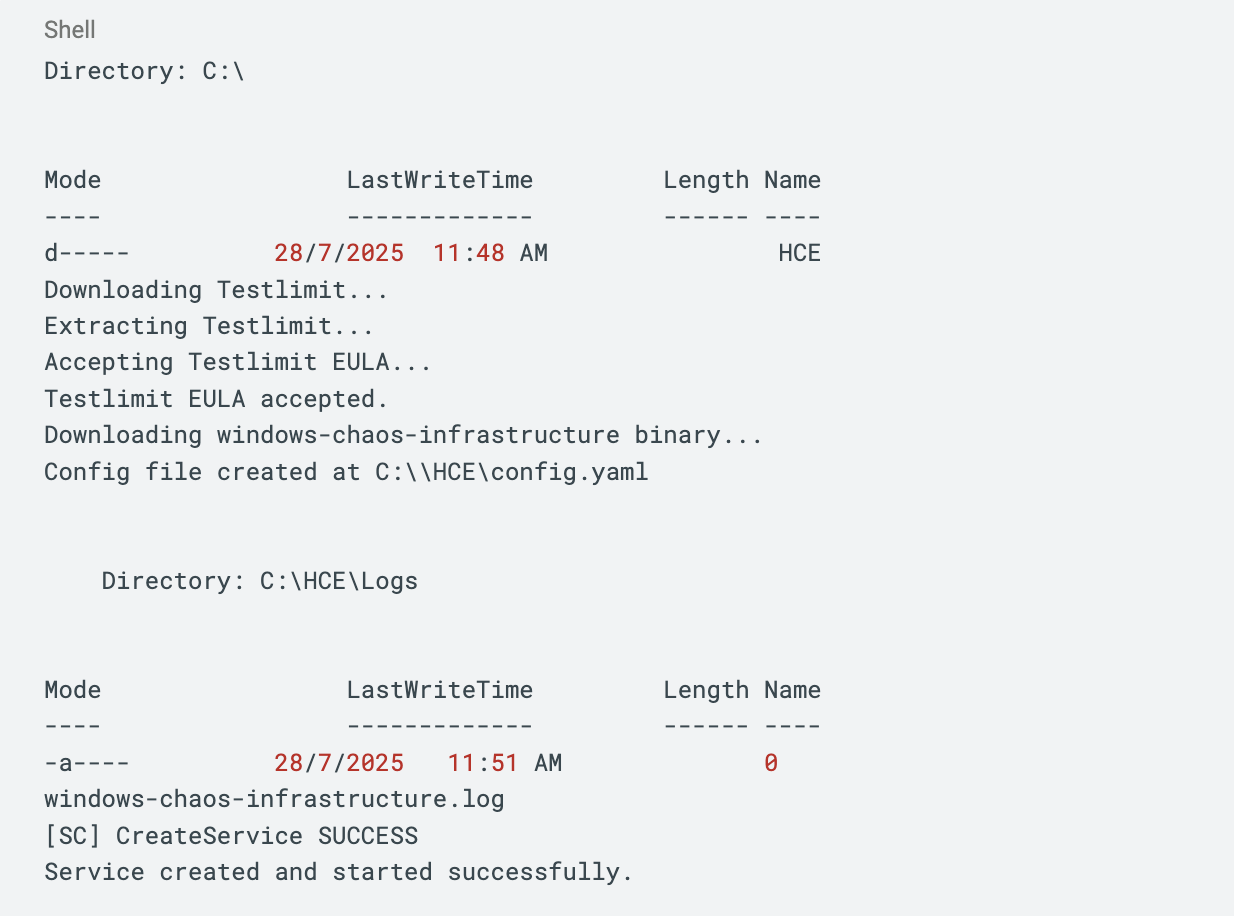
This output confirms that your infrastructure is being set up correctly, with all necessary components downloaded and configured.
Validation: Confirming Your Setup
After the installation completes, Harness needs a moment to set up all the chaos infrastructure resources. You can monitor this process by navigating to Environments and selecting Windows. Look for the connection status - when it shows CONNECTED, you're ready to proceed.
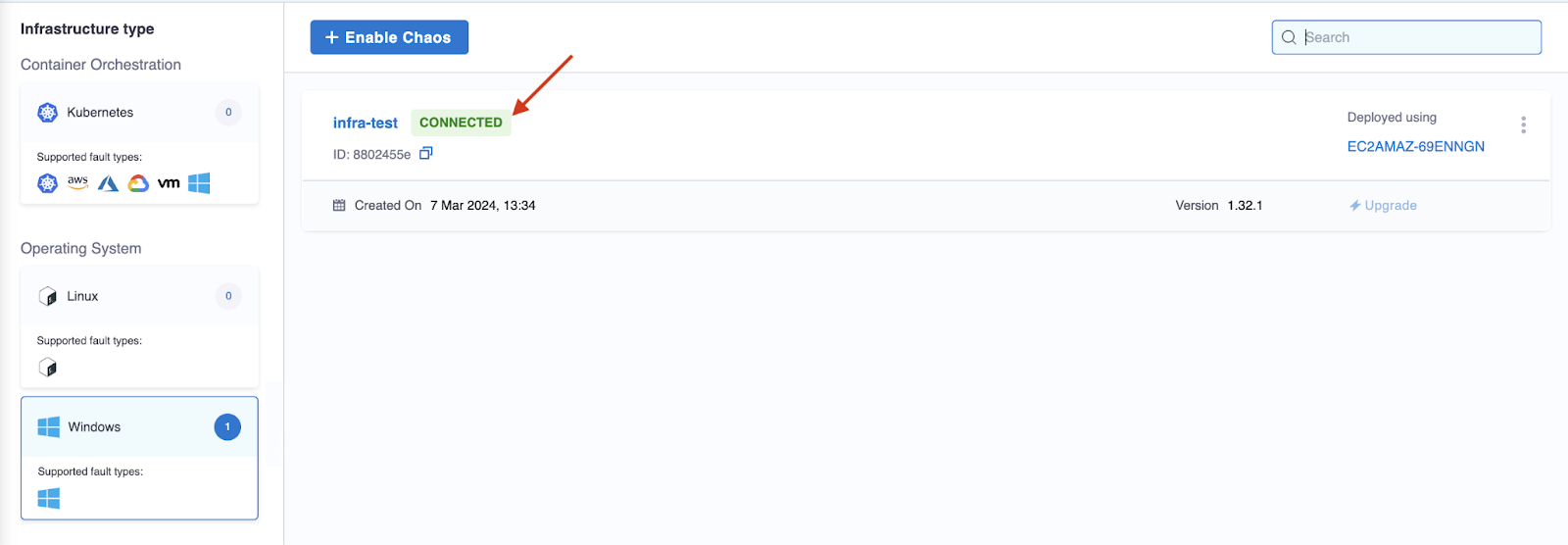
Creating Your First Windows Command Probe
With your infrastructure in place, let's create a Windows command probe. These probes are your eyes and ears during chaos experiments, allowing you to execute Windows-specific commands and PowerShell scripts to validate system behavior.
Understanding the Windows Command Probe
The Windows command probe extends standard command probe functionality to support both Windows Command Prompt (cmd) and PowerShell execution contexts. This flexibility means you can leverage the full power of Windows command-line tools and PowerShell scripts in your chaos experiments.
For our example, we'll create a probe that checks the system hostname during a Windows CPU stress experiment. This demonstrates how you can validate system responsiveness even under significant load.
Setting Up Your Command Probe
- Head to the Resilience Probe section in your left navigation pane, choose Windows as your target infrastructure and select Command Probe.
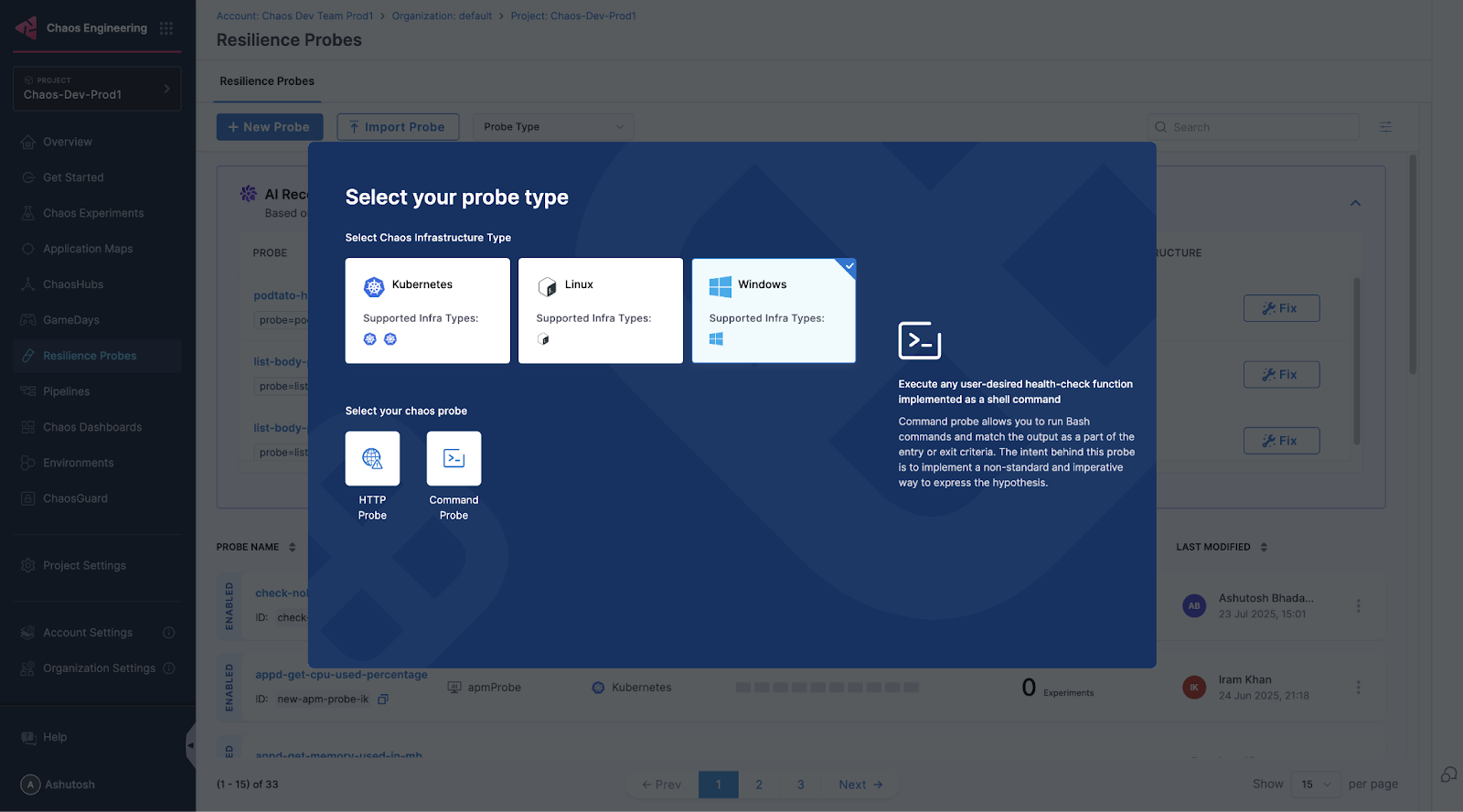
Configuration Details
Basic Configuration:
- Naming: Choose a descriptive name for your command probe. Something like "check-host-name" clearly indicates what this probe does.
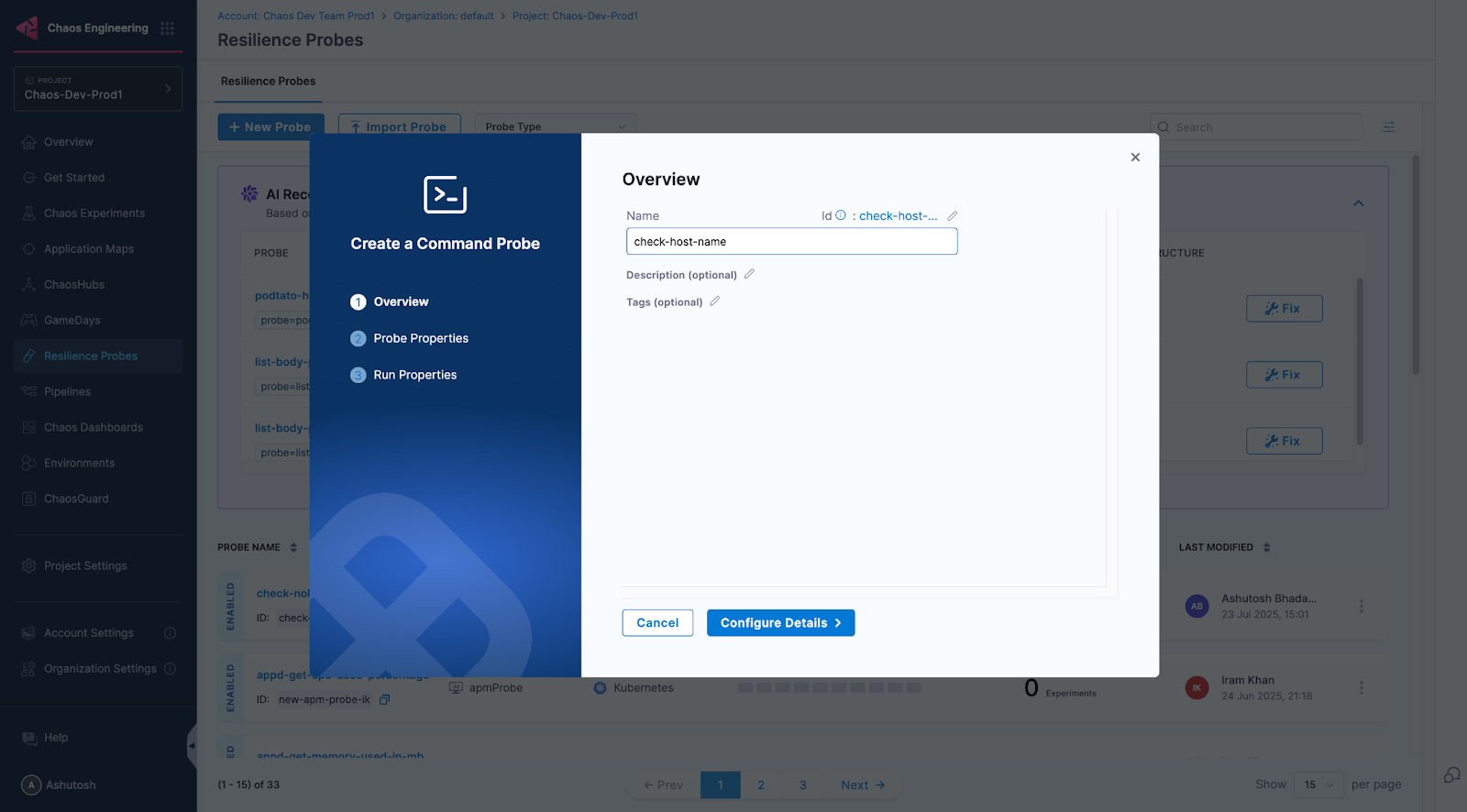
- Command Configuration: This is where you specify:
- Command: The actual Windows command or PowerShell script you want to execute
- Type: Whether you're using cmd, PowerShell, or another execution context
- Comparison Criteria: How you want to evaluate the command output
- Value: The expected value for comparison
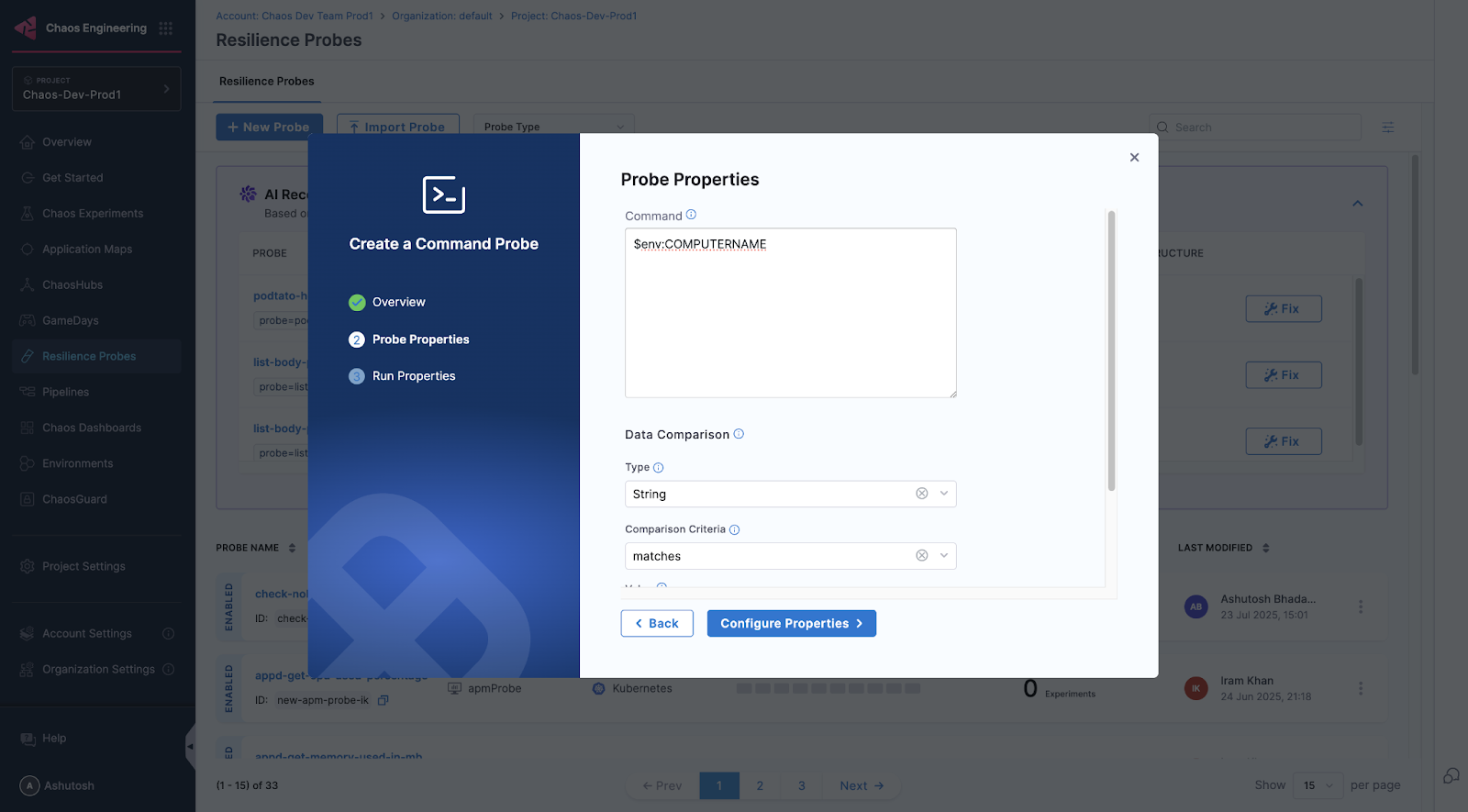
3. Properties Configuration: Fine-tune your probe's behavior with these settings:
- Timeout: How long to wait for command execution
- Interval: How frequently to run the probe
- Attempt: Number of retry attempts if the probe fails
- Polling Interval: Time between polling attempts
- Verbosity: Level of detail in probe output logs
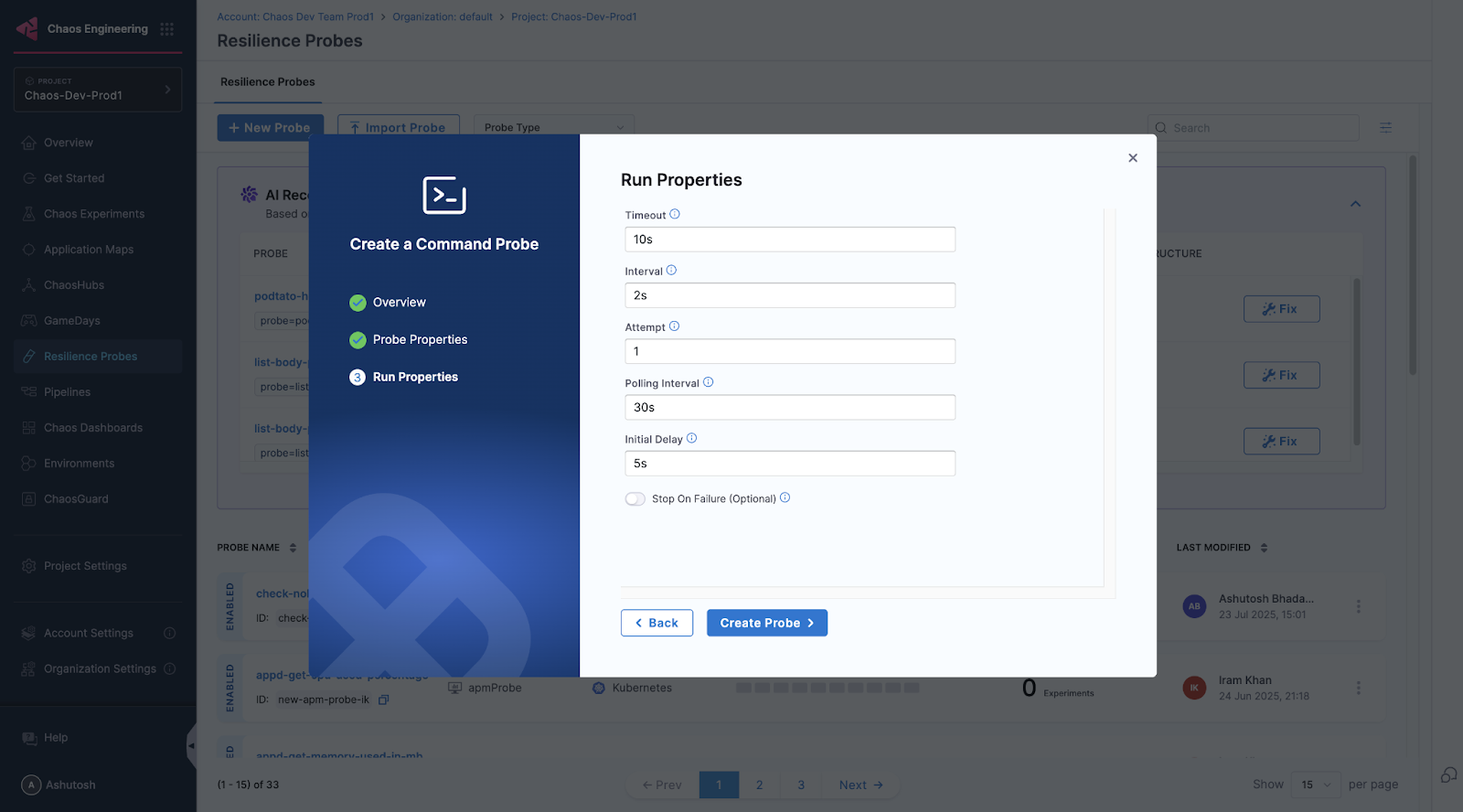
These configuration options give you granular control over how your probe behaves during experiments, ensuring you can adapt to different testing scenarios.
Integrating Your Probe with Chaos Experiments
Creating the probe is just the beginning. The real value comes from attaching it to your chaos experiments to monitor system behavior during failure scenarios.
Attachment Process
Once you've created your Windows command probe, it becomes available for attachment to any chaos experiment targeting your Windows infrastructure. During experiment runs, you can monitor probe execution results in real-time, giving you immediate feedback on how your system responds to chaos.
Your newly created probe will appear in the list of available probes when you're configuring your chaos experiments. Simply select it and configure any experiment-specific parameters as needed.
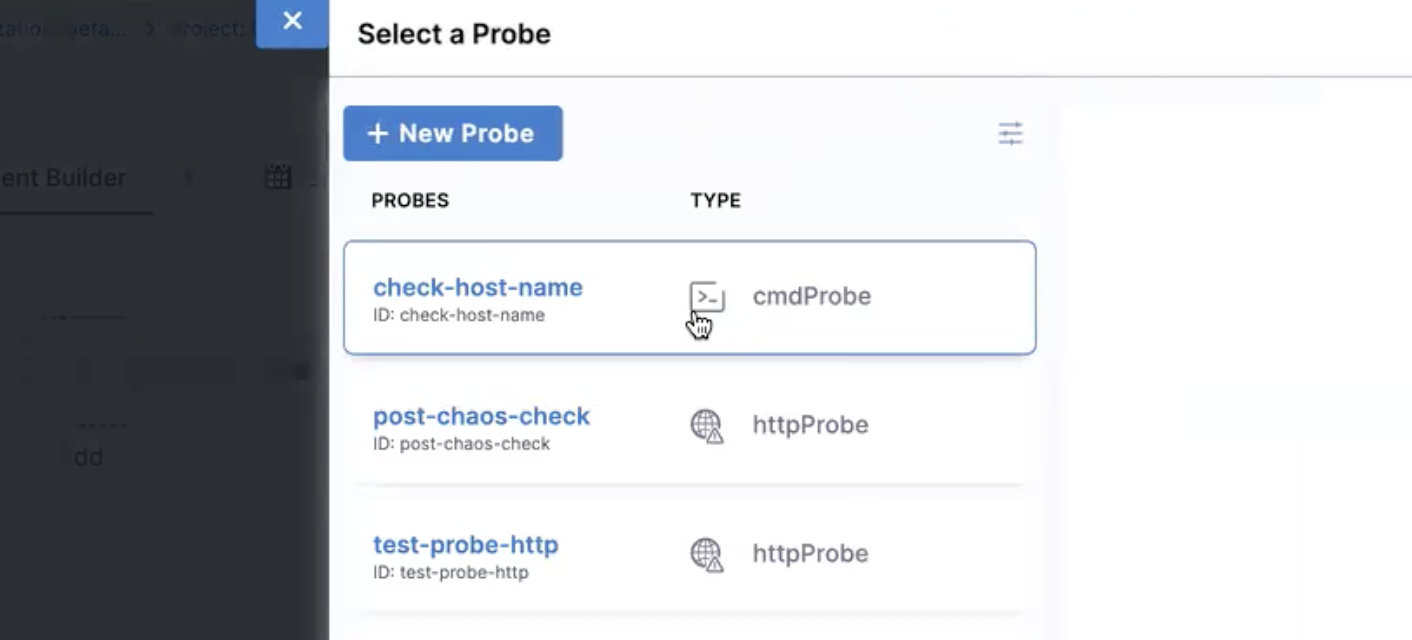
Monitoring and Validation
Now the command probe will provide continuous validation during experiments. As your Windows CPU stress experiment runs, your hostname probe will execute at defined intervals, ensuring the system remains responsive and behaves as expected.
You can watch the probe execution results in real-time during your experiment, providing immediate insight into system health and responsiveness. This real-time feedback is crucial for understanding how your Windows systems handle stress and failure scenarios.
During your CPU stress experiment, this probe will check every minute whether the system can still execute the hostname command and return the expected result. If the probe fails, you'll know that the CPU stress has impacted basic system responsiveness beyond acceptable levels.
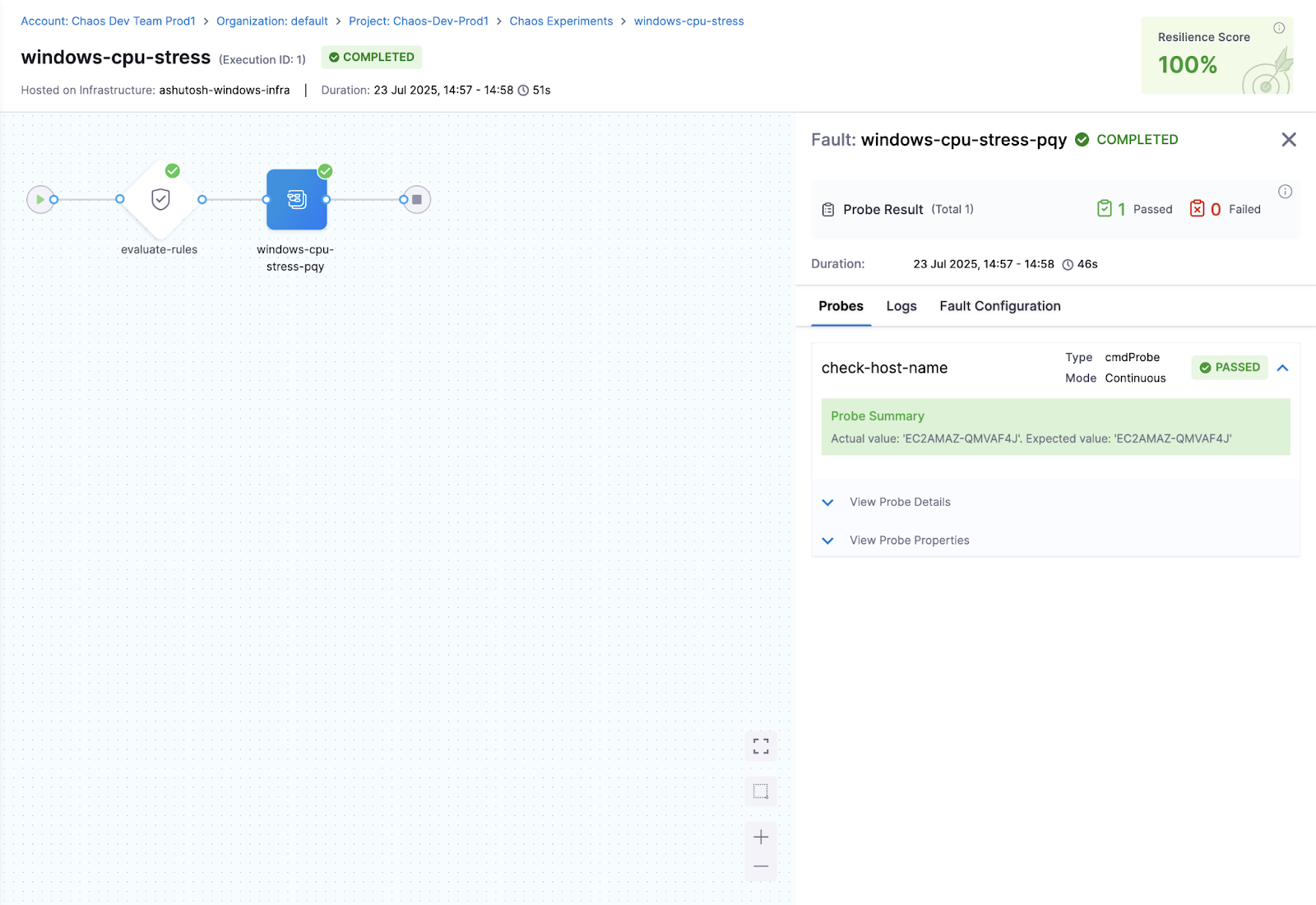
Your Path to Resilient Windows Systems
Windows command probes in Harness Chaos provide a powerful way to validate system behavior during failure scenarios. By combining proper infrastructure setup with well-configured command probes, you can gain deep insights into how your Windows systems respond to chaos.
The key to success lies in thoughtful probe design that aligns with your specific resilience requirements. Start with simple probes like hostname checks, then gradually expand to more complex validation scenarios as you become comfortable with the platform.
Remember, chaos engineering is about building confidence in your systems' ability to handle the unexpected. Windows command probes are your tool for measuring and validating that confidence in real-time. With proper setup, configuration, and monitoring, you'll be well-equipped to ensure your Windows infrastructure can withstand whatever challenges come its way.
The journey from infrastructure setup to running successful chaos experiments with command probes might seem complex at first, but each step builds upon the previous one. Take your time with the initial setup, experiment with different probe configurations, and gradually build up your chaos engineering practices. Your future self (and your users) will thank you for the resilient systems you build today.
New to Harness Chaos Engineering ? Signup here
Trying to find the documentation for Chaos Engineering ? Go here: Chaos Engineering
